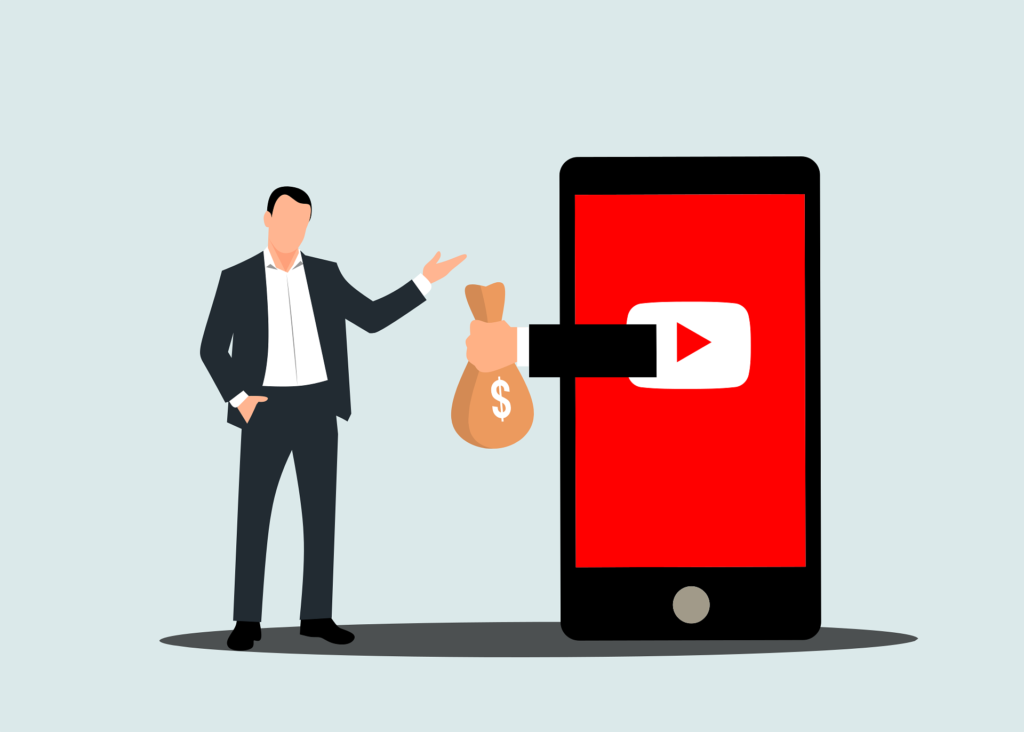Every business wants to guide prospects from awareness to conversion as seamlessly as possible. But in today’s crowded digital landscape, generic content strategies often fail to resonate with diverse audiences. Enter AI-powered content recommendations—a game-changing approach to delivering the right message to the right person at the right time.
AI doesn’t just automate the content delivery process; it personalizes it by analyzing user behavior, preferences, and intent. By recommending content that matches where your prospects are in the funnel, AI ensures they’re engaged, informed, and motivated to take the next step. In this guide, we’ll explore how to use AI to make your content recommendations smarter, faster, and more effective.
Let’s break it down into actionable steps for moving prospects through your funnel with AI.
Step 1: Understanding Your Funnel and Content Needs
Mapping the Customer Journey
Before leveraging AI, it’s essential to map out your sales funnel. This involves breaking down your customer journey into key stages—awareness, consideration, decision, and retention. Each stage represents a different mindset, and your content needs to align with the unique needs of each.
For instance, in the awareness stage, prospects are exploring their problems and looking for solutions. Educational blog posts or explainer videos work well here. In the decision stage, they need specific comparisons or testimonials to build trust. By defining these stages, you can plan what type of content AI should recommend at each point.
A clear understanding of your funnel ensures your AI-powered recommendations are targeted and relevant.
Assessing Existing Content
Once your funnel is mapped, take an inventory of your current content. Identify which pieces align with each stage and where the gaps lie. For example, if you lack content for the consideration stage, such as case studies or product demos, this is an area to address before implementing AI.
AI thrives on data, so the more content you have, the better its recommendations will be. However, quality is just as important as quantity. Ensure your content is up-to-date, engaging, and tailored to your audience’s needs.
A strong content library provides the foundation for effective AI-powered recommendations.
Setting Clear Goals
What do you want to achieve with AI-powered content recommendations? Whether it’s increasing engagement, shortening sales cycles, or boosting conversions, defining your goals ensures you use AI effectively. For example, if your goal is to move prospects from the consideration stage to the decision stage, AI should focus on recommending product comparisons or testimonials.
Clear goals allow you to measure the success of your AI strategy and refine it over time.
Step 2: Using AI to Analyze Prospect Behavior

Tracking Engagement Data
AI’s ability to deliver personalized content recommendations starts with data. By tracking engagement metrics like page views, clicks, time spent on pages, and downloads, AI can build a detailed profile of each prospect. For instance, if a prospect repeatedly visits pages about a specific product, AI identifies this as an area of interest.
This data-driven approach allows AI to predict what content will resonate most with each prospect, ensuring recommendations are relevant and timely.
Tracking engagement helps AI understand your audience’s needs better than traditional methods.
Identifying Patterns and Intent
AI doesn’t just collect data—it finds patterns. For example, it might identify that prospects who read blog posts about ROI calculators are more likely to download whitepapers. These insights allow AI to recommend content that aligns with similar intent.
Understanding intent is crucial for moving prospects down the funnel. If AI detects that a prospect is in the awareness stage, it will prioritize educational content. If they show signs of decision-making, such as downloading pricing guides, AI shifts to recommending sales-focused materials.
Pattern recognition ensures your content aligns with each prospect’s journey.
Real-Time Adaptation
One of AI’s greatest strengths is its ability to adapt in real time. If a prospect interacts with new content, AI updates its recommendations instantly. For example, if a lead watches a product demo, AI might follow up with a comparison guide or customer success story.
Real-time adaptation ensures your content recommendations stay relevant, keeping prospects engaged and progressing through the funnel.
Step 3: Delivering Personalized Content Recommendations

Tailoring Content for Each Stage
AI ensures every prospect receives content tailored to their stage in the funnel. For example, a prospect in the awareness stage might receive blog posts or introductory videos, while someone in the consideration stage might get comparison charts or case studies.
By delivering stage-specific content, AI keeps prospects engaged without overwhelming them with irrelevant information. For instance, a B2B software company might recommend a whitepaper to an early-stage lead and a demo request to a mid-stage lead.
Tailored recommendations make each interaction meaningful, building trust and guiding prospects forward.
Leveraging Dynamic Content
Dynamic content—personalized elements within emails, landing pages, or ads—is a powerful way to engage prospects. AI uses prospect data to customize these elements in real-time. For instance, an email might include a personalized subject line or recommend a blog post based on the recipient’s recent activity.
Dynamic content creates a sense of individual attention, increasing engagement and conversions. For example, an e-commerce site might recommend products based on a customer’s browsing history, while a SaaS platform might suggest tutorials aligned with the user’s goals.
By making content feel personal, AI deepens connections with prospects.
Multi-Channel Delivery
Prospects interact with your brand across multiple channels, from email to social media to your website. AI ensures consistent content recommendations across all these touchpoints. For instance, a prospect who clicks on a social media ad might see related content in their email inbox later.
This multi-channel approach creates a seamless experience, ensuring prospects receive the right content no matter where they engage with your brand.
Consistency across channels strengthens your messaging and reinforces trust.
Step 4: Testing and Optimizing AI Recommendations

A/B Testing for Continuous Improvement
AI-powered content recommendations aren’t set-it-and-forget-it. Regular A/B testing helps you identify what works best. For example, test different types of content, formats, or delivery times to see which drives the most engagement.
If AI recommends case studies to decision-stage leads, test whether adding a testimonial increases conversions. Similarly, compare the performance of video content versus blog posts for awareness-stage leads.
Testing ensures your AI strategy evolves with your audience’s preferences.
Monitoring Metrics
Track key metrics like click-through rates, time spent on recommended content, and conversions to measure the effectiveness of your AI recommendations. For instance, if a prospect spends significant time on a recommended whitepaper but doesn’t progress, consider offering more actionable content, like a demo.
Use these insights to refine your content strategy and improve AI’s predictive accuracy.
Monitoring metrics ensures your AI recommendations deliver measurable results.
Gathering Feedback
Prospect feedback provides valuable insights into the effectiveness of your AI-powered recommendations. For instance, if prospects consistently find certain content helpful, double down on creating similar pieces. If they express confusion, revisit the content’s clarity or alignment with their needs.
Feedback helps you fine-tune your strategy, ensuring your content stays relevant and impactful.
Step 5: Scaling AI-Powered Recommendations
Expanding Your Content Library
As your AI strategy grows, so should your content library. Ensure you have a variety of content for every stage of the funnel, from blog posts and infographics to videos and case studies. This diversity allows AI to recommend the most relevant content for each prospect.
For instance, a robust library might include industry-specific resources, ensuring AI can cater to niche audiences effectively.
Expanding your content ensures AI always has the tools to engage your audience.
Automating More Touchpoints
AI’s scalability allows you to automate content recommendations across additional touchpoints, such as chatbot interactions, SMS campaigns, or in-app notifications. For example, a chatbot might recommend a tutorial based on the user’s question, while an app notification highlights features they haven’t explored yet.
Automating touchpoints ensures consistent engagement across your entire ecosystem.
Preparing for Future Trends
AI-powered content recommendations are continually evolving. Stay ahead by exploring emerging trends, such as voice search optimization or predictive analytics. For example, AI could use voice interactions to recommend podcasts or videos that align with a prospect’s interests.
Adapting to trends keeps your AI strategy innovative and effective.

Related: Check out our free tools:

Step 6: Real-World Applications of AI-Powered Content Recommendations
B2B SaaS: Driving Conversions Through Strategic Insights
In the B2B SaaS space, prospects often require extensive research before committing to a product. AI-powered content recommendations can guide them by delivering exactly what they need, when they need it. For example, if a lead visits your pricing page multiple times, AI might recommend a detailed ROI calculator or a case study featuring a similar-sized company.
These recommendations don’t just engage the prospect—they also build trust by showcasing how your product addresses their specific challenges. For instance, if a lead attends a webinar on a feature you offer, follow up with an in-depth tutorial or a free trial offer. AI’s ability to analyze the lead’s journey ensures the content feels timely and relevant.
This targeted approach reduces friction in the decision-making process and accelerates conversions.
E-Commerce: Personalizing the Shopping Experience
E-commerce platforms can use AI to create hyper-personalized shopping journeys that keep customers engaged. For instance, if a shopper browses a specific category but doesn’t make a purchase, AI can recommend related products or offer limited-time discounts through email or app notifications.
AI can also enhance the post-purchase experience. For example, if a customer buys a camera, AI might suggest accessories like lenses or tripods. By understanding purchase behavior, AI ensures that every recommendation feels like a natural next step.
This personalization not only boosts sales but also strengthens customer loyalty, encouraging repeat purchases.
Content Marketing: Keeping Audiences Engaged
For content-heavy businesses like media platforms or blogs, AI-powered recommendations keep readers engaged for longer periods. For example, after a visitor reads an article, AI can recommend similar or trending posts to keep them on the site. Over time, this increases session duration and builds a deeper connection with your audience.
Email newsletters also benefit from AI. Instead of sending generic updates, AI can curate content based on what each subscriber has previously read or interacted with. For example, if a subscriber frequently engages with technology news, their newsletter might prioritize articles in that niche.
This tailored approach makes your audience feel understood, turning casual readers into loyal followers.
Step 7: Overcoming Challenges with AI-Powered Recommendations

Ensuring Data Privacy and Compliance
AI-powered recommendations rely heavily on user data, which raises privacy concerns. To build trust and stay compliant with regulations like GDPR and CCPA, ensure transparency about how you collect, store, and use data. Always ask for consent before tracking user behavior.
For example, implement clear opt-in options for tracking cookies and explain how the data enhances their experience. Use anonymized or aggregated data whenever possible to further protect privacy.
By prioritizing data security, you can leverage AI without compromising trust.
Avoiding Over-Automation
While AI is powerful, relying solely on automation can sometimes make interactions feel impersonal. To avoid this, combine AI-driven recommendations with human oversight. For instance, sales reps can use AI insights to guide their conversations, adding a personal touch where automation falls short.
For example, if AI flags a lead as highly engaged but undecided, a follow-up call from a sales rep can address specific concerns that prewritten content might miss. This balance ensures that your strategy remains customer-focused.
Striking the right mix of automation and human interaction keeps engagement authentic.
Managing Content Overload
AI can recommend a vast amount of content, but bombarding prospects with too many options can overwhelm them. To avoid content overload, limit recommendations to the most relevant pieces. For example, instead of suggesting ten articles after a blog post, highlight the top three based on the prospect’s behavior.
Prioritizing quality over quantity ensures your recommendations feel curated and purposeful, enhancing the user experience.
Step 8: Measuring the Success of AI Recommendations

Tracking Engagement Metrics
Monitor key engagement metrics to assess how well your recommendations are performing. These include click-through rates, time spent on recommended content, and bounce rates. For example, if a recommended case study sees high engagement but low conversions, you may need to refine your calls-to-action.
Metrics provide insights into what works and help you adjust your strategy to better align with audience preferences.
Analyzing Conversion Data
Ultimately, the success of AI-powered recommendations depends on how they impact conversions. Track how many leads progress through the funnel after interacting with recommended content. For example, if a demo request increases significantly after prospects view comparison guides, it’s a sign your recommendations are effective.
Use this data to replicate successful patterns and refine weaker areas.
Gathering Qualitative Feedback
In addition to quantitative metrics, gather feedback from prospects and customers about their experiences. Surveys or direct conversations can reveal whether the recommendations felt helpful, relevant, or overwhelming. Use this input to fine-tune your approach.
Qualitative feedback ensures your strategy remains audience-centric and responsive to their needs.
Step 9: Scaling AI-Powered Recommendations for Long-Term Growth
Expanding Across Channels
As your AI-powered recommendation system proves its effectiveness, expand it across all channels where your audience interacts. This includes your website, email campaigns, social media, and even offline touchpoints like customer service interactions.
For example, if a customer calls your support team, AI can recommend follow-up resources or offers based on their inquiry. This omnichannel approach ensures consistency and reinforces your messaging.
Investing in Continuous Improvement
AI technology evolves rapidly, and so do audience expectations. Regularly update your AI tools and strategies to keep pace with new trends and capabilities. For example, explore predictive analytics or voice-based recommendations to stay ahead of competitors.
Investing in continuous improvement ensures your system remains effective and innovative.
Building Long-Term Relationships
AI-powered recommendations aren’t just about short-term conversions—they’re about building lasting relationships. By consistently delivering value through personalized content, you earn trust and loyalty over time. For example, even after a customer makes a purchase, AI can recommend resources that enhance their experience or suggest complementary products.
This ongoing engagement turns prospects into advocates, driving long-term growth.
Step 10: Examples of AI-Powered Content Recommendation Success Stories

Netflix’s Personalized Recommendations
Netflix is a shining example of AI-powered content recommendations done right. While it isn’t strictly a sales funnel, its approach to recommending shows and movies based on user behavior mirrors how businesses can move prospects down the funnel. Netflix’s AI algorithm analyzes viewing history, preferences, and even the time of day users watch content. This allows the platform to suggest highly relevant titles that keep viewers engaged for longer.
For marketers, this showcases the power of tailored suggestions. Imagine applying similar principles to your content strategy—offering prospects the exact whitepaper, tutorial, or webinar they need at the right moment to address their pain points or curiosities.
This kind of precision doesn’t just keep users engaged; it builds loyalty and fosters trust in your brand.
Amazon’s Product Recommendations
Amazon has perfected the art of AI-powered recommendations to boost sales. Every time a user browses or buys a product, Amazon’s AI suggests related items, frequently bought-together bundles, or complementary accessories. For example, a customer purchasing a camera might see recommendations for tripods, lenses, or carrying cases.
This strategy works seamlessly within a sales funnel. If your business offers multiple products or services, AI can recommend upgrades, cross-sells, or add-ons based on the prospect’s behavior. By keeping recommendations relevant and timely, you not only increase conversions but also the average transaction value.
Amazon’s success proves that content recommendations don’t stop at conversions—they can continue driving value post-purchase.
HubSpot’s Dynamic Content Delivery
HubSpot, a leader in marketing automation, uses AI to tailor content recommendations across multiple channels. Their platform tracks user behavior—like what pages a visitor views or which emails they open—and uses that data to suggest blog posts, webinars, or eBooks.
For example, a lead who reads a blog post about lead scoring might receive an email recommending an in-depth guide on automation. If they engage further, HubSpot’s AI could suggest a demo or case study, seamlessly guiding them from awareness to decision.
HubSpot’s approach highlights the importance of aligning AI recommendations with the prospect’s position in the funnel, ensuring a smooth and logical progression.
Step 11: AI and the Future of Content Recommendations
Hyper-Personalization Through Advanced AI
The future of AI-powered content recommendations lies in hyper-personalization. Advanced AI systems will go beyond analyzing behaviors to incorporating emotional cues, environmental factors, and even real-time context. For example, if a prospect interacts with your brand on a mobile device during their commute, AI might recommend shorter, digestible content like videos or podcasts.
Hyper-personalization ensures that every interaction feels tailor-made, increasing the likelihood of engagement and conversions.
Predictive Analytics for Anticipating Needs
Predictive analytics is already a significant part of AI, but its potential is far from fully realized. Future systems will be able to anticipate customer needs before they even express them. For instance, based on patterns, AI could predict when a prospect is likely to request a demo and proactively recommend resources that accelerate their decision-making.
This anticipatory approach shortens sales cycles and creates a proactive, customer-first experience.
Seamless Integration Across Emerging Platforms
As technology evolves, new platforms like augmented reality (AR), virtual reality (VR), and voice assistants are becoming part of the customer journey. AI-powered content recommendations will integrate seamlessly into these platforms. For example, an AR app for home improvement might recommend tutorials or product links as users visualize designs in real-time.
By embracing emerging platforms, businesses can stay ahead of trends and engage prospects wherever they are.
Conclusion: Unlocking the Power of AI for Content Recommendations
AI-powered content recommendations are the key to creating seamless, personalized experiences that move prospects through your funnel. By understanding your audience, analyzing behavior, and delivering tailored content across multiple channels, AI ensures every interaction feels relevant and engaging.
The process requires continuous testing, optimization, and expansion, but the rewards are clear: higher engagement, shorter sales cycles, and stronger relationships with your prospects. Start implementing AI-powered content recommendations today and transform your sales funnel into a high-performing, customer-centric engine. With the right strategy, the results will speak for themselves.
READ NEXT:
- Are Vanity Metrics Killing Your Marketing Efficiency? Here’s What to Track Instead
- Pinpointing Digital Marketing ROI: Why Your Metrics Aren’t Telling the Full Story
- Unlocking Real ROI in Digital Marketing: The Hidden Costs Draining Your Budget
- How Misaligned Marketing Funnels Are Blocking Your ROI Potential
- Best Digital Marketing Agency In Santa Ana, California
- Best Digital Marketing Agency In San Francisco, California




















